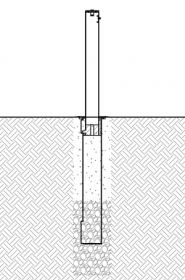Installing R-8400 Series Retractable Bollards
Reliance Foundry’s premier line of retractable bollards allow access to be granted or restricted to accommodate the changing needs of streetscapes. A R-8400 series retractable bollard can be collapsed into the ground by inserting a key into its shaft and turning. The bollard can be telescoped back into position using the folding handle on the head of the bollard. It is locked in its upright position by re-inserting the key and turning. Reliance Foundry’s sleek R-8400 series retractable bollards eliminate the storage space required for removable bollards and provide flexibility of access control.
Retractable bollards are intended to act as solely visual traffic deterrents that temporarily restrict or limit access to particular areas. It is important to note that the bollard will offer little impact resistance.
PARTS LIST
|
# |
PART |
QTY |
|---|---|---|
|
1 |
Retractable Bollard Assembly |
1 |
|
2 |
Retractable Bollard Receiver |
1 |
|
3 |
Key |
2 |
|
4 |
Reflective Tape (optional) |
1 |
INSTALLATION EQUIPMENT
|
Auger |
Dirt Tamper |
|
Level |
Chalk |
|
Measuring Tape |
|
NOTE
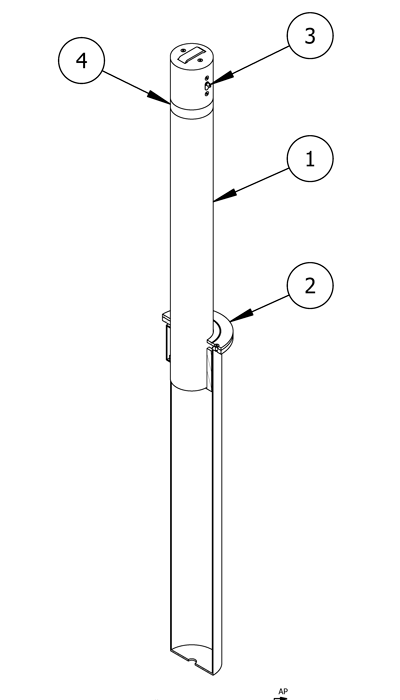
- To protect the finish, keep bollards in original packaging until the exact moment of installation.
- Handle with care to avoid scratching or damaging bollard surfaces as abrasions will lead to rust.
- Once scratched, bollards cannot be repaired to original form without re-finishing the entire surface.
Before installation
Study the site plans
Site plans are generally created by the architect of the project.
Refer to site plans to locate the precise center point of each bollard.
Ensure that the plan coincides with the site and familiarize yourself with the intended arrangement of the bollards.
Check for hazards
Always check for hazards such as water pipes, gas lines, and underground wiring before digging.
Prepare the site for concrete
Dig a hole to a minimum depth of 54″.
The diameter of the hole should extend to a minimum of 14″.
Center the auger on the installation mark and bore a hole to the required depth and diameter.
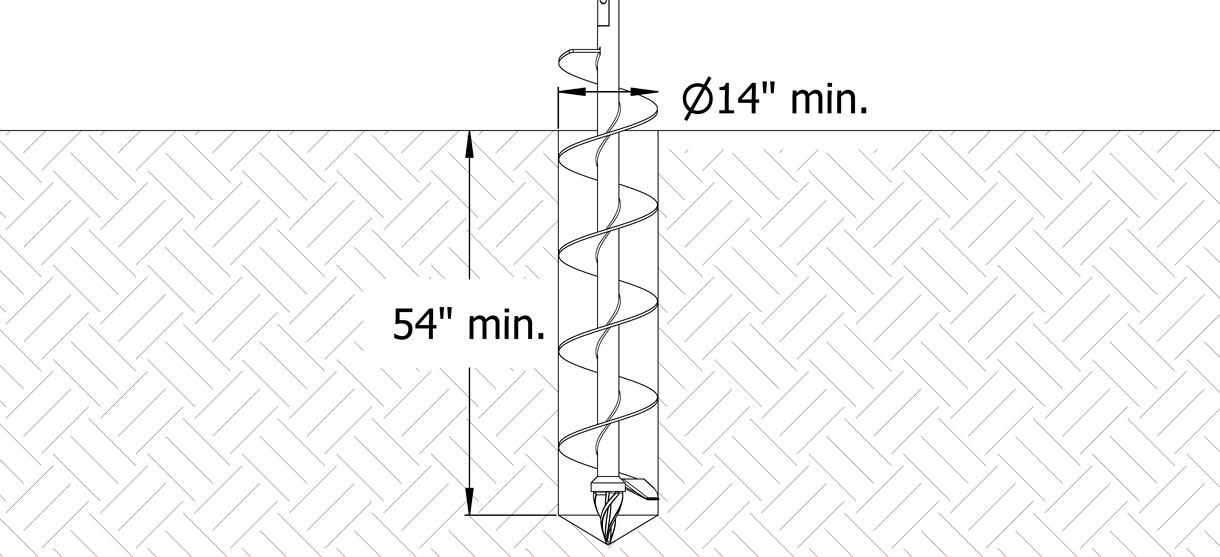
Ensure the area is properly formed to create a perimeter that will hold wet concrete.
Use a dirt tamper to compact the soil below the intended surface.
Add the drain rock
Back fill the drilled hole with drain rock so that when the bollard assembly is placed in the site, the top edge of the receiver will sit at approximately 1/4″ above grade.
Prepare the bollard assembly
Keep the bollard in its protective packaging.
Carefully place the bollard assembly near the installation position.
Install the bollard assembly
Place the bollard assembly in designated location
When ready to install, remove the protective packaging.
Place the bollard assembly in the center of the installation hole. Ensure that the top edge of the receiver will sit at approximately 1/4″ above grade. This will allow a slight berm to be created with concrete.
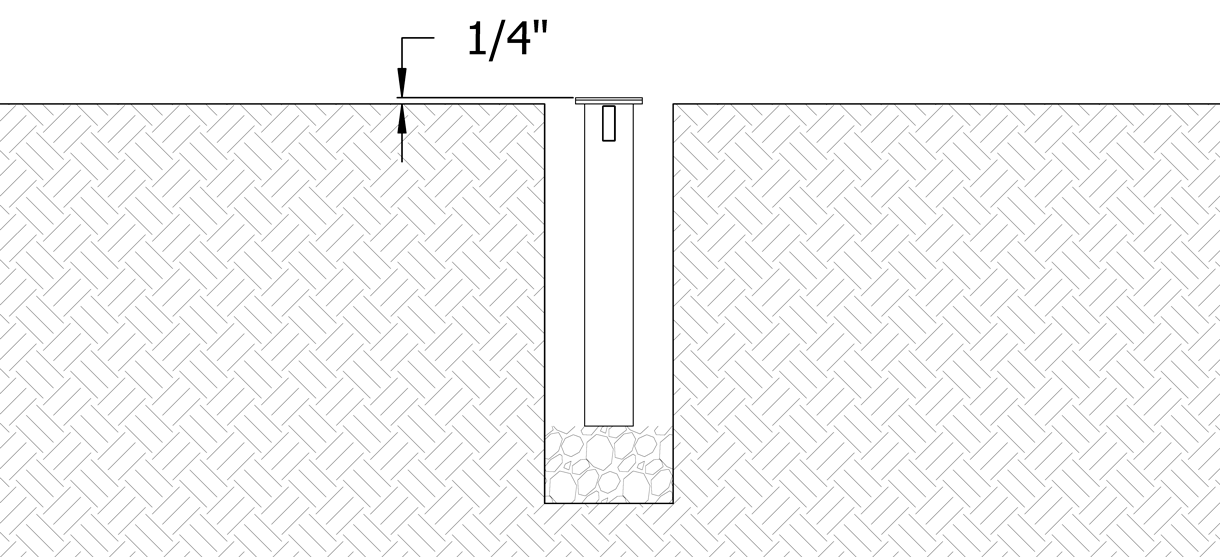
Extend the bollard
Extend or raise the bollard from the bollard assembly to its upright position. Hold a level against it and ensure that the bollard is plumb.
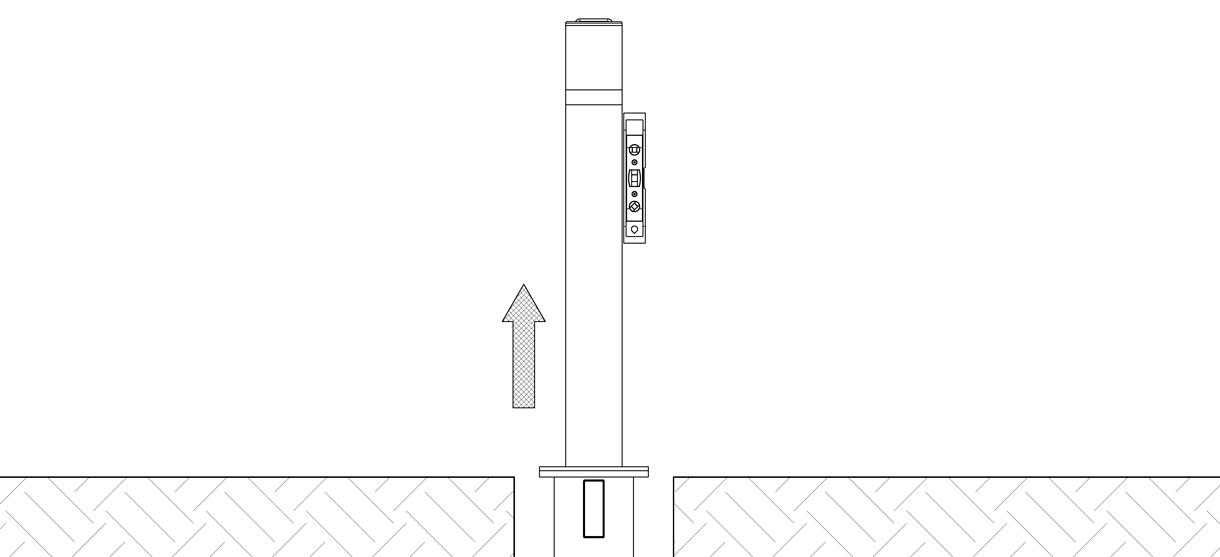
Back fill around the receiver approximately 18″ from the bottom tamp to ensure the bollard is stable and still plumb.
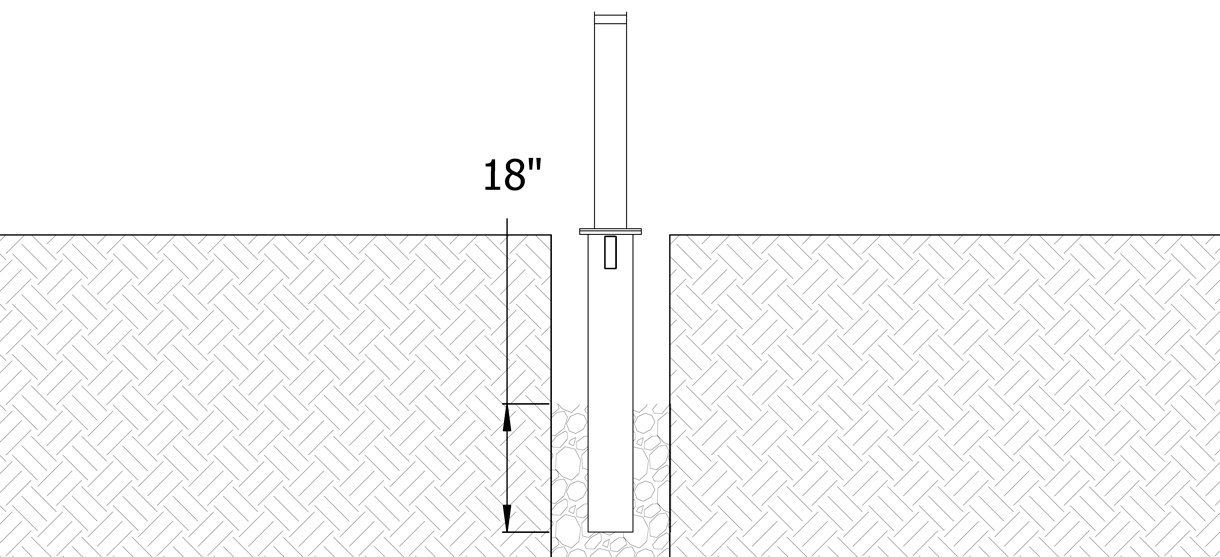
Turn the key to collapse the bollard back into the bollard assembly, ensuring not to disrupt the assembly’s position.
Note: For the R-8471/R-8471-RA models, the key is used only used for collapsing the bollard into the bollard assembly. For the R-8472/R-8472-RA models, the key is used for both extending and collapsing the bollard from the bollard assembly.
Pour the concrete
Mix and pour the concrete
Ensure that the proper ratio of water and concrete mix is used.
The concrete should have a similar texture to moldable clay.
Pour the concrete evenly into the site. The concrete should be slightly raised towards the top edge of the receiver to create a slight berm. Avoid disrupting the bollard assembly.
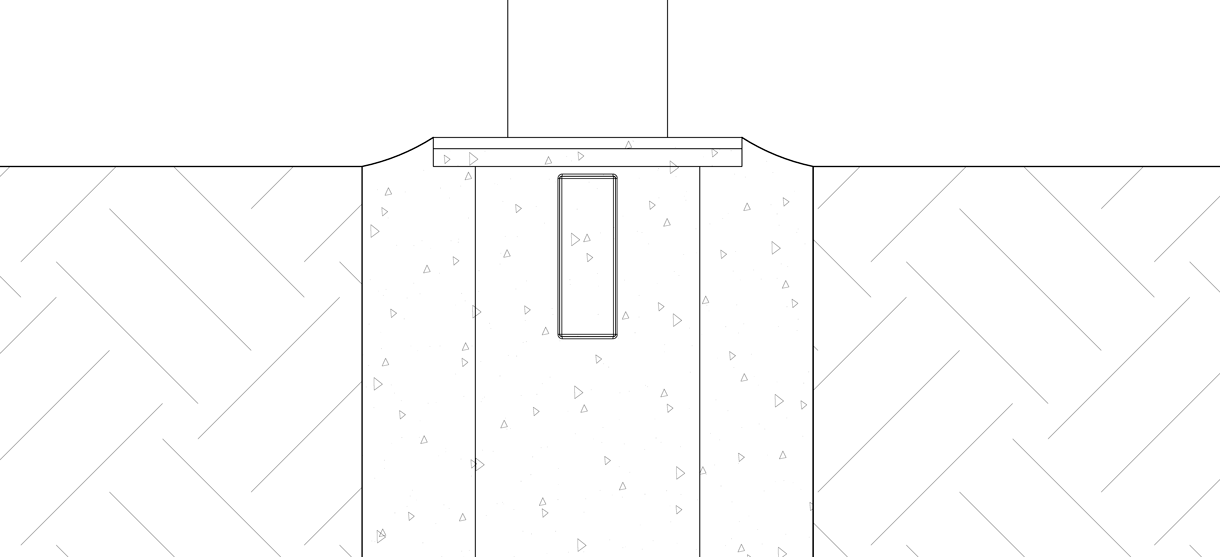
Allow the concrete to cure
A minimum of 2–3 days should be given for concrete to cure before beginning construction projects on new concrete surfaces.
Note: Moisture in the environment and cool temperatures can significantly slow the process.
Inspect
Inspect the installation
From a distance, examine the plane of view.
Ensure the bollard is plumb to the surface, and the surface is flat.
Check the bollard for any signs of surface damage
Abrasions should be covered as soon as possible to prevent rust and ensure the proper life of the bollard. For damage repair or other servicing needs, please contact Reliance Foundry’s sales department.
Care and maintenance
Reliance Foundry manufactures its products to the highest design standards to ensure their durability. Reliance Foundry’s bollards are finished with long-lasting powder coating. In most North American environments, routine inspections and cleaning will ensure that bollards retain their aesthetic appeal. Proper care and maintenance are required to maintain the finish and ensure a full service life.
